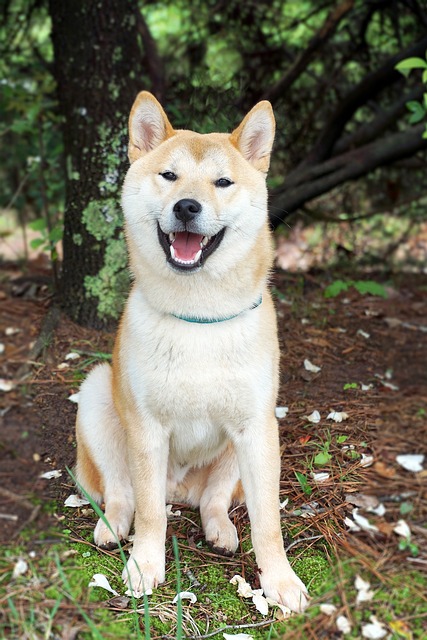


The Shiba Inu is a small to medium-sized Japanese breed known for its fox-like appearance, confident personality, and independent nature. Originally bred for hunting small game in the mountainous regions of Japan, the Shiba Inu is known for its agility, alertness, and strong hunting instincts. Despite their small size, Shiba Inus are energetic and agile, making them excellent companions for active individuals and families. They are also highly intelligent, which makes training both rewarding and challenging. Their striking appearance, along with their strong-willed nature, makes the Shiba Inu a unique and popular breed around the world.
The Shiba Inu is one of Japan's oldest and most beloved dog breeds, with origins dating back over 2,000 years. The breed was originally used for hunting small game such as birds and rabbits in the mountainous regions of Japan. The name "Shiba Inu" translates to "brushwood dog" in Japanese, likely referring to the type of terrain where the dogs were used for hunting. Over time, the Shiba Inu became a beloved companion and guard dog, known for its independence and courage. During World War II, the breed nearly went extinct due to food shortages and war-related factors, but dedicated breeders worked to preserve the Shiba Inu. Today, the breed is one of the most popular in Japan and has gained increasing popularity internationally, particularly in the United States and other countries.
The Shiba Inu is a compact and well-balanced dog, characterized by its fox-like appearance. Adult Shiba Inus typically stand between 13.5 and 16.5 inches (34 to 42 cm) tall at the shoulder and weigh between 17 and 23 pounds (7.5 to 10.5 kg). They have a thick double coat, which consists of a soft, insulating undercoat and a harsh, straight outer coat. The coat comes in three main colors: red, black and tan, and sesame (red with black-tipped hairs). The breed's most distinctive feature is its curled tail, which rests over the back. Shiba Inus have a proud and confident expression, with small, triangular ears and dark, almond-shaped eyes. Their compact size and agile build make them quick and nimble, perfect for their original purpose as a hunter.
The Shiba Inu is known for its spirited personality and strong independence. This breed is often described as cat-like due to its aloof and self-reliant nature. While they are loyal and affectionate with their families, Shiba Inus can be reserved and even stubborn at times. They are known to have a bold and confident attitude, often acting as though they are in charge. Despite their independent streak, Shiba Inus are generally good with their family members, including children, as long as they are socialized and trained from an early age. They can be cautious around strangers, and early socialization is crucial to prevent any unwanted territorial or aggressive behavior. The Shiba Inu's independent nature means they may not always be as eager to please as other breeds, so patience and consistency are important during training.
Shiba Inus are an active and energetic breed that requires regular exercise to stay healthy and happy. They enjoy daily walks, playtime in a secure yard, and mentally stimulating activities. While they are small, they are agile and quick, so providing them with opportunities to run and explore is important for their physical and mental well-being. Shiba Inus also enjoy activities like fetch and agility training, which can help keep them engaged and satisfied. Despite their energetic nature, Shiba Inus are often content to relax in the home once they have had sufficient exercise. However, without adequate physical and mental stimulation, they may become bored and engage in undesirable behaviors such as chewing or digging. Regular exercise is essential to prevent this and maintain a balanced temperament.
Training a Shiba Inu can be a rewarding but challenging experience. They are intelligent dogs but are also known for their independent and sometimes stubborn nature. This breed requires a firm, consistent, and patient handler who understands their need for autonomy. Positive reinforcement methods, such as praise, treats, and play, work best when training a Shiba Inu. However, because they can be reserved and independent, they may not always be as motivated to please as other breeds. Early socialization is essential to ensure that Shiba Inus grow into well-adjusted dogs. Exposing them to various people, animals, and environments will help prevent overly protective or territorial behaviors. Obedience training should start early, and owners should be prepared for the challenge of keeping their Shiba Inu focused during training sessions.
Shiba Inus are generally a healthy breed with a few specific health concerns. Some of the common health issues in the breed include hip dysplasia, patellar luxation, and allergies. Shiba Inus are also prone to eye conditions such as cataracts and glaucoma. Regular veterinary check-ups are important to detect any potential health issues early. Grooming requirements for the Shiba Inu are moderate. Their thick double coat sheds year-round, with more significant shedding during seasonal changes (spring and fall). Regular brushing is needed to manage shedding and keep their coat healthy. Shiba Inus also need their ears cleaned, their nails trimmed, and their teeth brushed regularly to maintain overall health. Due to their independent nature, Shiba Inus can sometimes be more difficult to manage during grooming, so introducing grooming routines at an early age is helpful.
The average lifespan of a Shiba Inu is between 12 to 15 years. With proper care, regular exercise, and a balanced diet, Shiba Inus can live long, healthy lives. Maintaining a healthy weight is important to prevent joint issues, and routine veterinary care is essential for detecting health problems early. Their active lifestyle and strong immune systems contribute to their overall health, and they can remain energetic and playful well into their senior years. Regular exercise, mental stimulation, and proper nutrition all play a role in extending a Shiba Inu's lifespan and ensuring they remain healthy throughout their life.
© copyright Dog Compendium 2024 - 2025